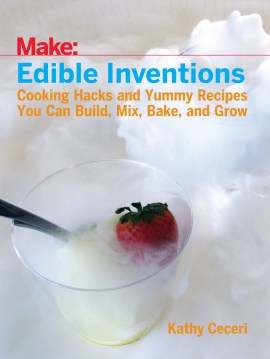
This month we delve into the world of the TINY… the microscopic even. Then we go even further to the world of the nanoparticle. Dive into these books and learn about the world that you can’t even see with your own eyes but is found all around you.
Microscopic

Tiny Creatures: The World of Microbes by Nicola Davies
This book is perfect for the curious kid who wants to know how microbes work.
All around the world—in the sea, in the soil, in the air, and in your body—there are living things so tiny that millions could fit on an ant’s antenna. They’re busy doing all sorts of things, from giving you a cold and making yogurt to eroding mountains and helping to make the air we breathe.

It’s Catching: The Infectious World of Germs and Microbes by Jennifer Gardy
Good for readers who want to learn all about germs
Don’t be afraid to delve into the good, bad, and sometimes truly ugly world of germs. Microbiologist Jennifer Gardy, who calls herself a disease detective, picks up her microscope to bring expert insight to the microbes that are all around us but are too small to see.

Many: The Diversity of Life on Earth by Nicola Davies
A great companion book to the Tiny Creatures book above.
The more we study the world around us, the more living things we discover every day. The planet is full of millions of species of plants, birds, animals, and microbes, and every single one — including us — is part of a big, beautiful, complicated pattern.

Ever wonder what you’ll find looking through a microscope? This book can help with that!
There are hidden worlds in nature—places you can visit only with a microscope. For more than twenty-five years, Dennis Kunkel has been exploring these worlds. Through the lenses of powerful microscopes, he has examined objects most people have never even thought about: a mosquito’s foot, a crystal of sugar, a grain of pollen, the delicate hairs on a blade of grass.

It’s a Fungus Among Us: The Good, the Bad & the Downright Scary by Carla Billups and Dawn Cusick
All about Fungus! Who wouldn’t want to read this book?
In It’s a Fungus Among Us, you’ll meet the wild group of organisms that can turn ants into zombies and eat trillions of pounds of feces every day. They’re not all gross though, these are the same types of organisms that make cheese stretchy, add sour tastes to candy, and make bread rise!
Nanoparticle level

Super Gear: Nanotechnology and Sports Team Up by Jennifer Swanson
A fun look at the science of nanotechnology and something the majority of us do every day — play sports!
Take a close-up look at sports and nanotechnology, the cutting-edge science that manipulates objects at the atomic level. Nanotechnology is used to create high-tech swimsuits, tennis rackets, golf clubs, running shoes, and more. It is changing the face of sports as we know it.

Nanotechnology (Cutting-edge Science and Technology) by Janet Slingerland
Nanotechnology — it’s everywhere! Check out this great book to learn more!
Examines the current status of the field of nanotechnology, including recent work and new technological developments, and discusses noted individuals and controversial issues.
Looking for a way to STEAM up the month? Take a listen to this rap about photosynthesis by Mr. D. Learn some amazing facts about the microscopic processes of how plants get energy.
**********
 Jennifer Swanson is the creator and administrator of the STEMTuesday blog. She is also the award-winning author of over 35 nonfiction books for kids. A self-professed science geek, Jennifer started a science club in her garage when she was 7 years old. While no longer working from the garage, Jennifer’s passion for science and writing is evident in her many books and also her presentations at the World Science Festival and the National Book Festival (2019). You can find Jennifer through her website, www.JenniferSwansonBooks.com
Jennifer Swanson is the creator and administrator of the STEMTuesday blog. She is also the award-winning author of over 35 nonfiction books for kids. A self-professed science geek, Jennifer started a science club in her garage when she was 7 years old. While no longer working from the garage, Jennifer’s passion for science and writing is evident in her many books and also her presentations at the World Science Festival and the National Book Festival (2019). You can find Jennifer through her website, www.JenniferSwansonBooks.com







 Welcome to STEM Tuesday: Author Interview & Book Giveaway, a repeating feature for the fourth Tuesday of every month. Go Science-Tech-Engineering-Math!
Welcome to STEM Tuesday: Author Interview & Book Giveaway, a repeating feature for the fourth Tuesday of every month. Go Science-Tech-Engineering-Math!


 Your host is
Your host is